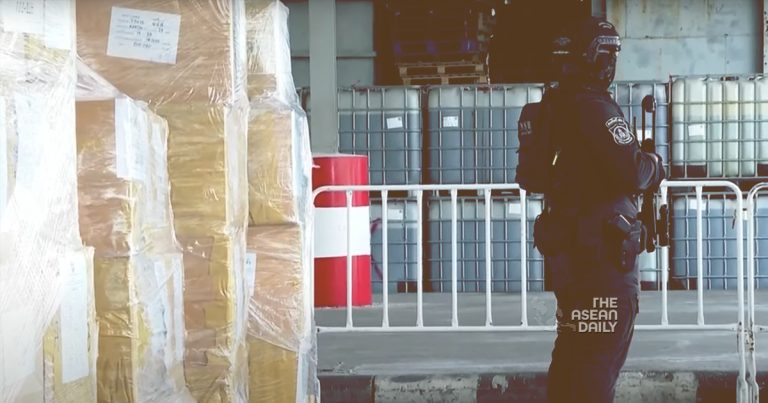7-6-2023 (BANGKOK) Drug traffickers in Southeast Asia are utilizing the sea as a means to avoid interception by land enforcements conducted in Thailand and China, according to a report by the United Nations. The UN Office on Drugs and Crime (UNODC) highlighted this trend in its latest report on synthetic drugs in East Asia and Southeast Asia. Smugglers are capitalizing on the relative lack of monitoring in the waters, moving substantial quantities of methamphetamine and other illicit drugs through central Myanmar to the Andaman Sea.
In 2022, the combined seizures in the two regions amounted to nearly 151 tonnes of methamphetamine, with Southeast Asia accounting for 138 tonnes. The report reveals that drug cartels in the region were more successful last year in expanding their production and establishing new smuggling routes compared to the previous year. Methamphetamine continues to be the most widely used drug in East Asia and Southeast Asia.
Myanmar’s remote eastern Shan state remains a major hub for crystal meth production due to weak law enforcement. A significant portion of the drugs is trafficked through the borders of Laos, Myanmar, and Thailand, commonly known as the Golden Triangle. The three Mekong nations seized approximately 113 tonnes of methamphetamine last year, representing three-quarters of the total seizures of the highly addictive drug in the region.
Chinese and Thai authorities have intensified enforcement efforts in the Golden Triangle in recent years, resulting in a decline in seizures. To elude capture, organized crime groups have learned to anticipate and adapt to law enforcement measures by diversifying their trade routes, particularly by shifting from land to maritime routes, as stated in the report.
The sea route involves shipping drug consignments from Myanmar down the Andaman Sea, unloading them in Thailand, and smuggling them into Malaysia by land, according to Jeremy Douglas, the UNODC’s representative for Southeast Asia and the Pacific. The maritime route facilitates easy transfer of supplies among smugglers by attaching tracking devices to packages and dropping them into the sea for retrieval later. Smugglers also engage in ship-to-ship transfers on the high seas, beyond the jurisdiction of any specific country. Small boats deliver illegal substances to large shipping vessels capable of covering long distances, reaching destinations as far as Australia, the Philippines, and Taiwan.
The rising drug trade through the maritime route poses a significant challenge for authorities. Southeast Asia witnesses a high number of fishing vessels operating in regional waters, making it impractical to inspect every single boat. Efforts to counter the drug trafficking operations in the region will require innovative strategies and increased collaboration among law enforcement agencies.




